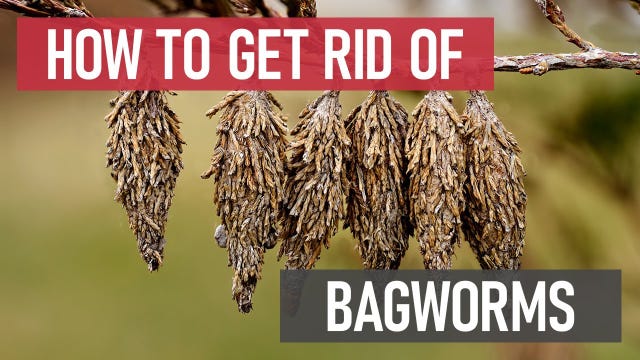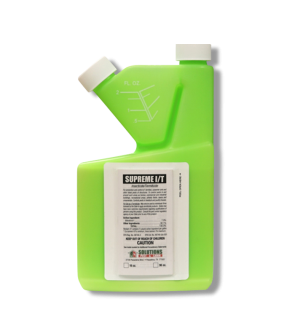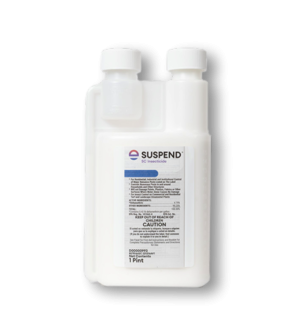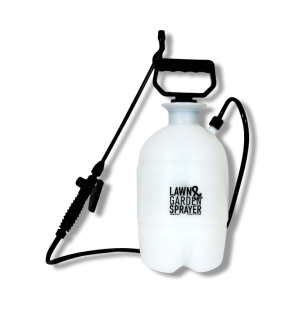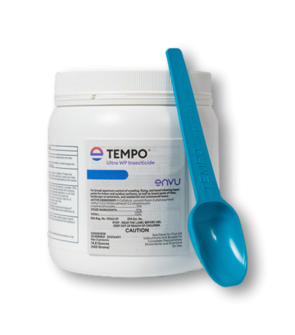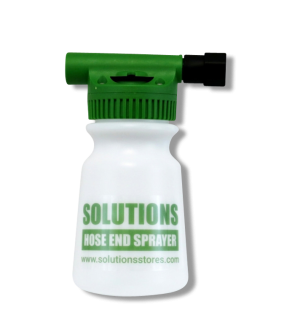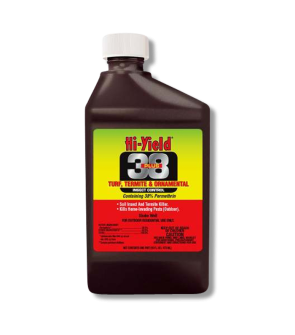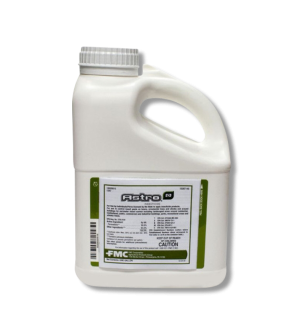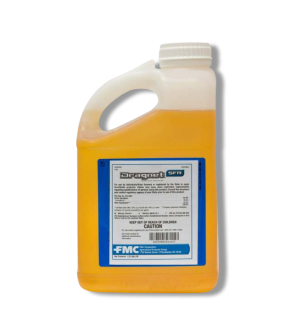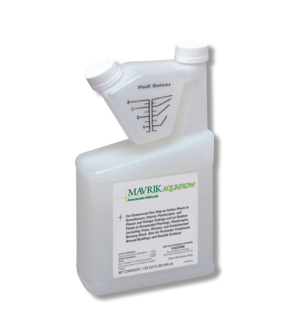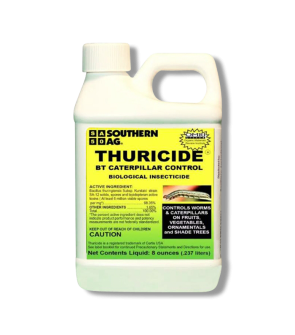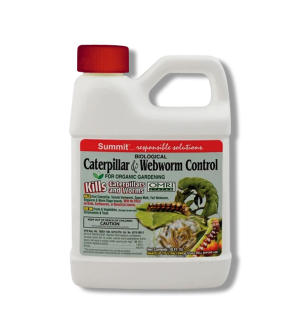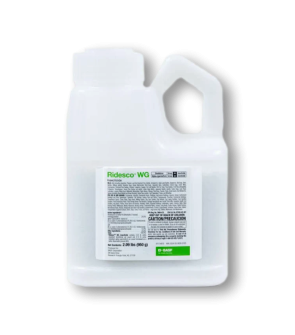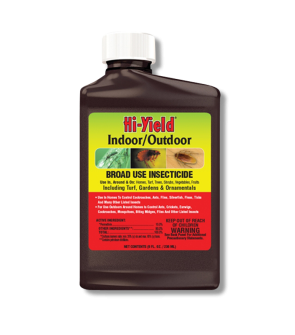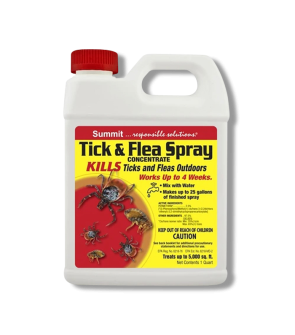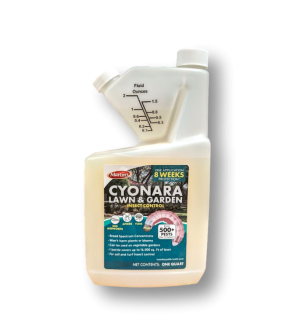Gain access to personalized product screening, the best pricing, rewards, and more!
Most Effective Products
Bagworm Control: How To Get Rid of Bagworms
This page is a general bagworm control guide. Using the suggested products and methods will get rid of bagworms. Follow this guide and use the recommended products, and we guarantee successful control of bagworms on your property.
Have you noticed an unexplainable discoloration or browning of your trees and shrubs? The cause may be the action of bagworms, also known as evergreen bagworms, casemoths, eastern bagworms, common bagworms, common basket worms, or North American bagworms. Bagworms are destructive insects that attack many species of trees and shrubs but are often found on conifers like juniper, pine, arborvitae, cypress, cedar, and spruce.
They get the name bagworms due to the insect wrapping themselves up in cocoon-like “bags” made from twigs, leaves, and self-spun silk. Once nestled in this self-made bag, a female Bagworm can lay between 500 to 1,000 eggs - meaning your bagworm problem will multiply into a major infestation if left unchecked. Each egg will hatch into another bagworm, ready to rip into nearby foliage.
Once you know you have a bagworm infestation on your property, it’s best to act quickly to eliminate it. However, the tricky part is that bagworms are usually not noticed right away because the bags they reside in usually fool homeowners, who confuse them with pine cones.
If you have bagworms in your yard, it is important to act quickly to remove the infestation. Otherwise, it will continue to grow and cause damage. Follow our DIY bagworm control guide, which explains how to get rid of bagworms in four simple steps.
Identification
Before you can carry out a treatment, you need to identify that you are facing a bagworm infestation. Knowing how hagworms look is an important part of identifying them correctly. Here are some key traits to watch out for.

- The best way to tell if you have a bagworm infestation is by identifying the spindle-like bags they create. These bags are made from silk combined with bits of leaves, twigs, and other plant material, allowing them to blend in with their surroundings. Usually, they contain one bagworm. They are brown, gray-brown, or white in coloration and may have spines throughout. For a mature bagworm, the bags can grow up to 50 millimeters in length. Each bag holds approximately 500 to 1,000 eggs.
- The caterpillar inside is soft-bodied and typically brown or gray, but it remains hidden inside the bag for most of its life. The caterpillar's head is usually darker than the rest of its body often grayish black to brown, and it has small legs that allow it to move while carrying the bag with it. The head is rounded and equipped with strong mandibles (jaws) that the caterpillar uses to chew leaves. The head protrudes from the top of the bag when the caterpillar is feeding but quickly retracts inside when it senses danger. As it grows, the caterpillar enlarges its bag to accommodate its size.
- As they mature, male bagworms emerge as small, dark moths with clear wings and the ability to fly, while females remain inside the bag as wingless, grub-like insects. Male bagworm moths have a wingspan of about 1-inch.
Use the image and description above to help you determine if you are seeing bagworms. If you need help, contact us, and one of our pros will help you with proper identification.
Inspection
Once you have confirmed the infestation is bagworms, you can move on to inspection. During this phase, you will locate the areas where bagworms are infesting and observe the conditions allowing them to thrive. This information will help you determine where to apply pesticide applications.

Where To Inspect
Bagworm infestations are exclusive to the outdoors and vegetation, so search your plants, especially conifers like juniper, pine, arborvitae, cypress, cedar, and spruce. They might also infest smaller shrubs and bushes, so look at this vegetation as well.
What To Look For
The most obvious sign is the presence of spindle-shaped bags hanging from branches, twigs, or even structures like fences. These bags look like small pinecones or clumps of dead plant matter. They’re often made from bits of leaves, twigs, and silk.
Look for areas where foliage is missing, browned, or thinned out, especially on the upper parts of trees or the tips of branches. Bagworm caterpillars feed heavily on leaves and needles, leading to defoliation.
In late spring to early summer, gently touch or disturb the bag to see if a caterpillar head emerges from the top. The caterpillar may poke out to feed and retreat when disturbed.
Treatment
Once you have confirmed bagworm activity, it is time to begin treatment. Remember to read all product labels, follow the application instructions on them, and stay safe by wearing personal protective equipment (PPE).
The best way to get rid of bagworms is to treat infestations with Supreme IT Insecticide. This product is labeled to kill bagworms and delivers exceptional control with a long residual, so you don't have to re-apply as often.
Step 1: Outdoor Treatment with Supreme IT

Supreme IT is a broad-spectrum insecticide that is labeled for treating bagworms. It also has a long residual effect that kills for up to 90 days after application.
To apply Supreme IT, mix it with water in a handheld pump sprayer, backpack sprayer, or hose-end sprayer.
If you are treating elevated foliage such as trees, we recommend using a hose-end sprayer.
To treat ornamentals, apply 0.125 to 0.25 fl. oz. of Supreme IT per 1 gallon of water per 1,000 sq. ft. You may also use 5.4 to 10.8 fl. oz. of product with 100 gallons of water.
Determine how much product to use by measuring the square footage of the treatment area. Find the square footage by measuring the treatment area's length and width in feet, then multiply them together (length X width = square footage).
Add the appropriate amount of water to your sprayer. Shake well and pump your sprayer, and you're ready to apply.
Time your treatment when bagworms hatch from their cocoons, usually in late May to mid-June.
Direct the Supreme IT application to contact as many bagworm larvae as possible and be sure to treat the entire plant thoroughly.
Use a fan spray setting to get excellent uniform coverage.
Avoid applications when rainfall is expected within 24 hours of application.
Do not apply the solution to any plants grown for consumption.
Before application to the entire planting, test treat a small number of plants and watch for signs of sensitivity. Some plant species may be sensitive to the final spray solution.
Prevention
After treatment, you must ensure that bagworms do not re-establish themselves on your trees. Here are some preventative measures we suggest following to keep bagworms away.
- Manually remove and destroy bagworm bags during fall, winter, or early spring before eggs hatch (typically between late May and early June).
- Keep trees and shrubs healthy through proper watering, mulching, and pruning. Healthy plants are more resilient to damage and can recover more easily from defoliation. Dispose of pruned material away from your property (do not compost), as bags may still contain eggs or larvae.
- In areas with a history of infestation, apply a preventive treatment with Supreme IT in late May or early June, when caterpillars are newly hatched and easier to control.
Key Takeaways
What Are Bagworms?
- Bagworms are larvae or caterpillars that enjoy feeding on trees and can be damaging when established in a yard. They are native to North America and are common throughout the United States. Bagworms will feed on many kinds of trees and shrubs but prefer spruce and juniper.
How To Get Rid of Bagworms in the Yard
- Applying Supreme IT Insecticide when larvae have started to hatch and are young can successfully control any infestation of bagworms. This is usually around late May or early to mid-June.
Preventing Bagworm Reinfestation
- To further prevent bagworms, prune and dispose of infested branches early, and apply Supreme IT in late May or early June when larvae are small and vulnerable. Combining early action, proper timing, and good plant care helps keep bagworm problems under control.






